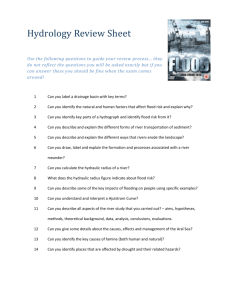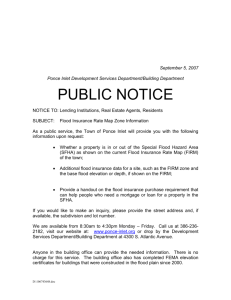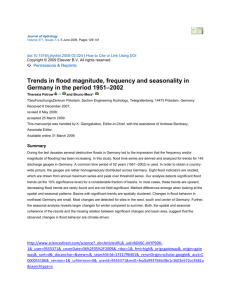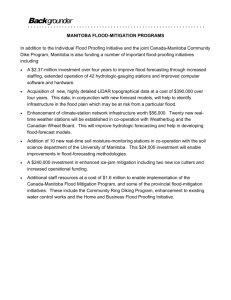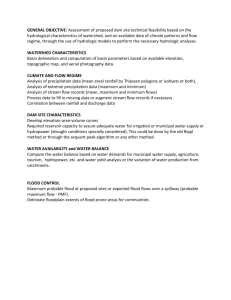The Christmas flood of 1964 swept through 40 years ago
advertisement
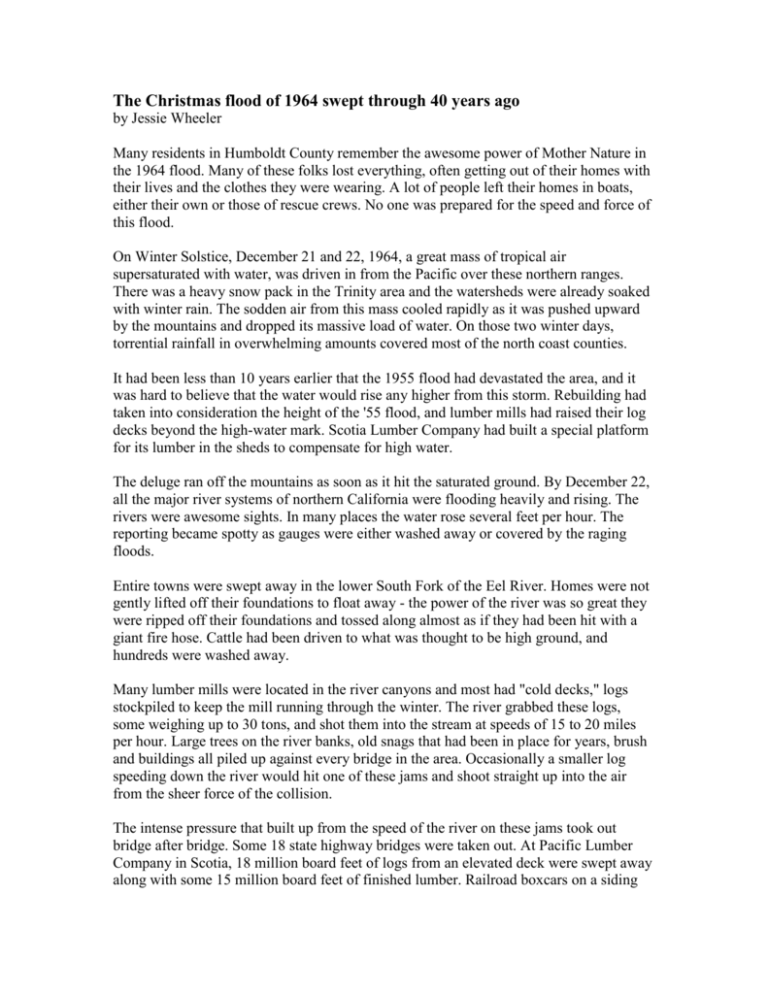
The Christmas flood of 1964 swept through 40 years ago by Jessie Wheeler Many residents in Humboldt County remember the awesome power of Mother Nature in the 1964 flood. Many of these folks lost everything, often getting out of their homes with their lives and the clothes they were wearing. A lot of people left their homes in boats, either their own or those of rescue crews. No one was prepared for the speed and force of this flood. On Winter Solstice, December 21 and 22, 1964, a great mass of tropical air supersaturated with water, was driven in from the Pacific over these northern ranges. There was a heavy snow pack in the Trinity area and the watersheds were already soaked with winter rain. The sodden air from this mass cooled rapidly as it was pushed upward by the mountains and dropped its massive load of water. On those two winter days, torrential rainfall in overwhelming amounts covered most of the north coast counties. It had been less than 10 years earlier that the 1955 flood had devastated the area, and it was hard to believe that the water would rise any higher from this storm. Rebuilding had taken into consideration the height of the '55 flood, and lumber mills had raised their log decks beyond the high-water mark. Scotia Lumber Company had built a special platform for its lumber in the sheds to compensate for high water. The deluge ran off the mountains as soon as it hit the saturated ground. By December 22, all the major river systems of northern California were flooding heavily and rising. The rivers were awesome sights. In many places the water rose several feet per hour. The reporting became spotty as gauges were either washed away or covered by the raging floods. Entire towns were swept away in the lower South Fork of the Eel River. Homes were not gently lifted off their foundations to float away - the power of the river was so great they were ripped off their foundations and tossed along almost as if they had been hit with a giant fire hose. Cattle had been driven to what was thought to be high ground, and hundreds were washed away. Many lumber mills were located in the river canyons and most had "cold decks," logs stockpiled to keep the mill running through the winter. The river grabbed these logs, some weighing up to 30 tons, and shot them into the stream at speeds of 15 to 20 miles per hour. Large trees on the river banks, old snags that had been in place for years, brush and buildings all piled up against every bridge in the area. Occasionally a smaller log speeding down the river would hit one of these jams and shoot straight up into the air from the sheer force of the collision. The intense pressure that built up from the speed of the river on these jams took out bridge after bridge. Some 18 state highway bridges were taken out. At Pacific Lumber Company in Scotia, 18 million board feet of logs from an elevated deck were swept away along with some 15 million board feet of finished lumber. Railroad boxcars on a siding were tossed about like toys. Watching the power of this flood was at times mesmerizing. Only those who actually saw these events could truly appreciate the wonder of that much force. Nearly 100 miles of the NWP railroad tracks were swept away or left dangling and tangled as the cliffs washed away beneath them. According to measurements taken at the Fernbridge time gauge, at 9 p.m. Dec. 21 the water was at 22.4 feet; the next day it rose to a new record of 28 feet at 3 p.m. and to 29.1 feet at 8:45 p.m. The river stayed above the previous all-time crest for more than 24 hours, which in itself is a record for any type of flood. By 9:30 a.m. on Christmas Eve day, it was down to 23.1 feet, still flood stage. Many brave and heroic stories are told about this flood and how individuals and communities helped each other out, in many cases risking lives to help others. It bears remembering that the awesome powers of nature cannot always be predicted here, and it's necessary to be as prepared as possible for the unexpected. Jessie Wheeler grew up in Bridgeville on the Van Duzen River. She was living in Ferndale at the time of the '64 flood. She is a member of the Senior News Editorial Advisory Board. Her e-mail is pioneer@saber.net.


